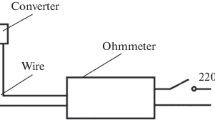Abstract
Carbon-carbon composites rank first among ceramic composite materials with a spectrum of properties and applications in various sectors. These composites are made of fibres in various directions and carbonaceous polymers and hydrocarbons as matrix precursors. Their density and properties depend on the type and volume fraction of reinforcement, matrix precursor used and end heat treatment temperature. Composites made with thermosetting resins as matrix precursors possess low densities (1.55–1.75g/cm3) and well-distributed microporosity whereas those made with pitch as the matrix precursor, after densification exhibit densities of 1.8–2.0g/cm3 with some mesopores, and those made by the CVD technique with hydrocarbon gases, possess intermediate densities and matrices with close porosities. The former (resin-based) composites exhibit high flexural strength, low toughness and low thermal conductivity, whereas the latter (pitch- and CVD-based) can be made with very high thermal conductivity (400–700 W/MK) in the fibre direction. Carbon-carbon composites are used in a variety of sectors requiring high mechanical properties at elevated temperatures, good frictional properties for brake pads in high speed vehicles or high thermal conductivity for thermal management applications. However, for extended life applications, these composites need to be protected against oxidation either through matrix modification with Si, Zr, Hf etc. or by multilayer oxidation protection coatings consisting of SiC, silica, zircon etc.
Similar content being viewed by others
References
Buckley J D 1988Ceram. Bull. 67: 364
Burchell T D 1999Carbon materials for advanced technologies (Pergamon)
Cook J, Gorden J E 1964Proc. R. Soc. London A2: 508
Edie D D 1998 The effect of processing on the structure and properties of carbon fibres.Carbon 36: 345–362
Fitzer E 1989Carbon fibers — Present state and future applications in carbon fibers, filaments and composites (eds) J L Figueiredoet al (Kluwer Academic) pp 3–41
Fitzer E, Manocha L M 1998Carbon reinforcements and carbon-carbon composites (Berlin: Springer-Verlag)
Kochendorfer R 2001Ceramic matrix composites in ceramic engineering and science (eds) M Singh, T Jessen (Am. Ceram. Soc.) vol. 22, pp 11–22
Pierson H O 1993Handbook of carbon, graphite, diamond and fullerenes (Noyes)
Manocha L M 1988Carbon 26: 333
Manocha L M 1994Carbon 32: 213
Manocha L M 2001 Carbon fibres. Inencyclopaedia of materials science and technology (eds) K J Jurgen Buschowet al (Elsevier) pp 906–916
McKee D W 1981 InChemistry and physics of carbon (eds) P L Walker, P A Thrower vol.1, p. 1
Rand B 1993 Matrix precursor for carbon-carbon composites. InEssentials of carbon-carbon composites (ed.) C R Thomas (London: R. Soc. Chem.)
Author information
Authors and Affiliations
Rights and permissions
About this article
Cite this article
Manocha, L.M. High performance carbon-carbon composites. Sadhana 28, 349–358 (2003). https://doi.org/10.1007/BF02717143
Issue Date:
DOI: https://doi.org/10.1007/BF02717143




